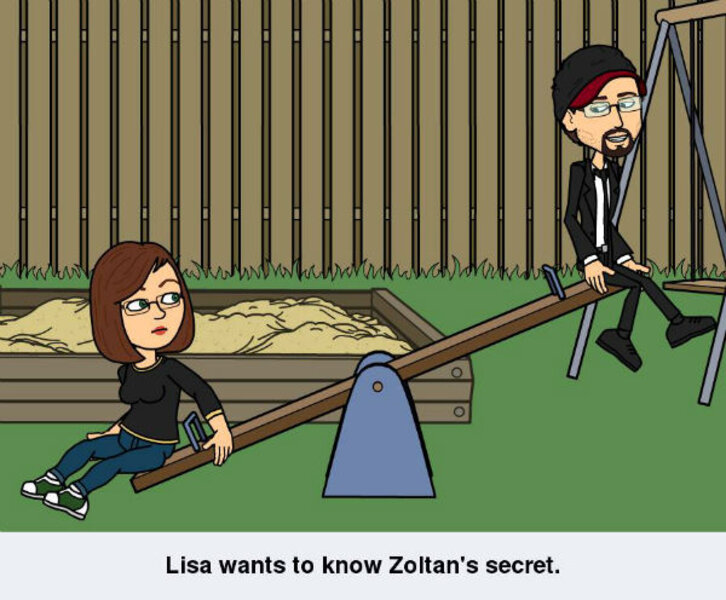Bitstrips offer lagging writers fun setting to explore written word
Loading...
Parents who want to help boys who are reluctant writers may want to learn more about Bitstrips, the new free interactive comic strip app sweeping the Facebook landscape.
The app called Bitstrips launched its 1.1.7 version for iPhone, iPod, and iOS users this week as well as on Google Play for Android users. According to the International Business Times, it currently has more than 10 million users.
Bitstrips is a customizable avatar-creation tool on the Web that lets users create and share comics of themselves and others with personalized messages.
As a parent I saw two opportunities in this new app: 1. Connect with my teens in the cutting edge technosphere via adding them to my playlist of avatar/characters for the strips. 2. Connect our youngest son, Quinten, age 9, to writing.
Quin is mainly an A student with the exception of writing, which is a steady C.
I can tell you firsthand that difficulties in writing can be devastating to a child's education and self-esteem. Despite all his successes, what he sees as “epic failure in writing” and communicating his ideas on paper hurts Quin’s learning.
In a meeting before the start of the school year here in Norfolk, Va., I was lucky to find we had a new principal, Dennis Fifer, who has a keen understanding of boys and writing issues.
He listened to the teacher describe my son’s inability to put his thoughts onto paper and suggested to the teacher that Quin be allowed to make his own comic strips instead.
Mr. Fifer explained that most boys lag behind girls in both handwriting and story writing. It’s sometimes called “pencil anxiety” because the coordinative lag in handwiring in boys leads to reluctance to use that pencil to write. He suggested a keyboard in place of a pencil and a comic strip in place of an essay.
Quin loved the idea of drawing his own strip in place of his regular essay for school.
However, this was not a perfect system. Quin’s first essay on the assigned theme, “Believe in yourself, dream big, inspire others,” ended up featuring him as a Minecraft character creating a portal from our world to the game world to defeat pollution and coastal flooding via the Lego League of Justice.
I realized Quin couldn’t get the hang of it by simply reading the Sunday funnies or a comic book because he is so literal in his thinking that he could not make the leap from someone else’s imagination to using his own.
Enter Bitstrips and a daily example of how mom and his favorite big brother, Zoltan, are living in an alternate comicverse on Facebook.
You can either download the free app to your mobile device or access the app on Facebook, or on Android, or on iOS via app stores or Google Play. Bitstrips for Schools offers teachers the program for classroom use.
Then create an avatar of yourself based on your appearance with customizable hair, clothes, facial features, and body type. Next, choose from numerous pre-made scenes and scenarios.
You can also create avatars for friends who haven’t already signed up for Bitstrips, which Quin did with great glee for his brothers, me, and his father to include in his adventures.
Kids can add the script by typing in his own dialogue and captions or see them randomly generated.
You could almost hear an audible “click” when Quin saw the first strip generated.
“Oh! I get it,” Quin said looking at a comic of a cartoon me and Zoltan on a see-saw. “I don’t actually get the jokes, but I get it. Can I try?”
It’s actually good that he doesn’t have his own Facebook account because it’s forcing him to think outside himself when writing stories.
It’s a relief that Quin is engaged in writing and storytelling. Perhaps it’s a greater relief to see that the avatar he made of me represented more of his ideal than my reality. Win-win.






